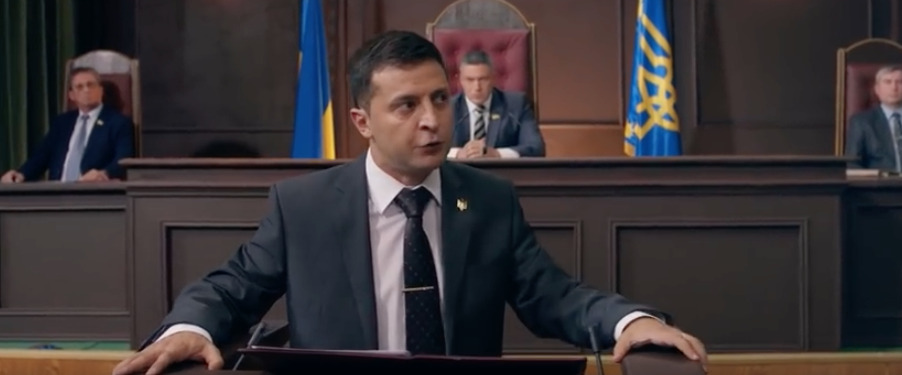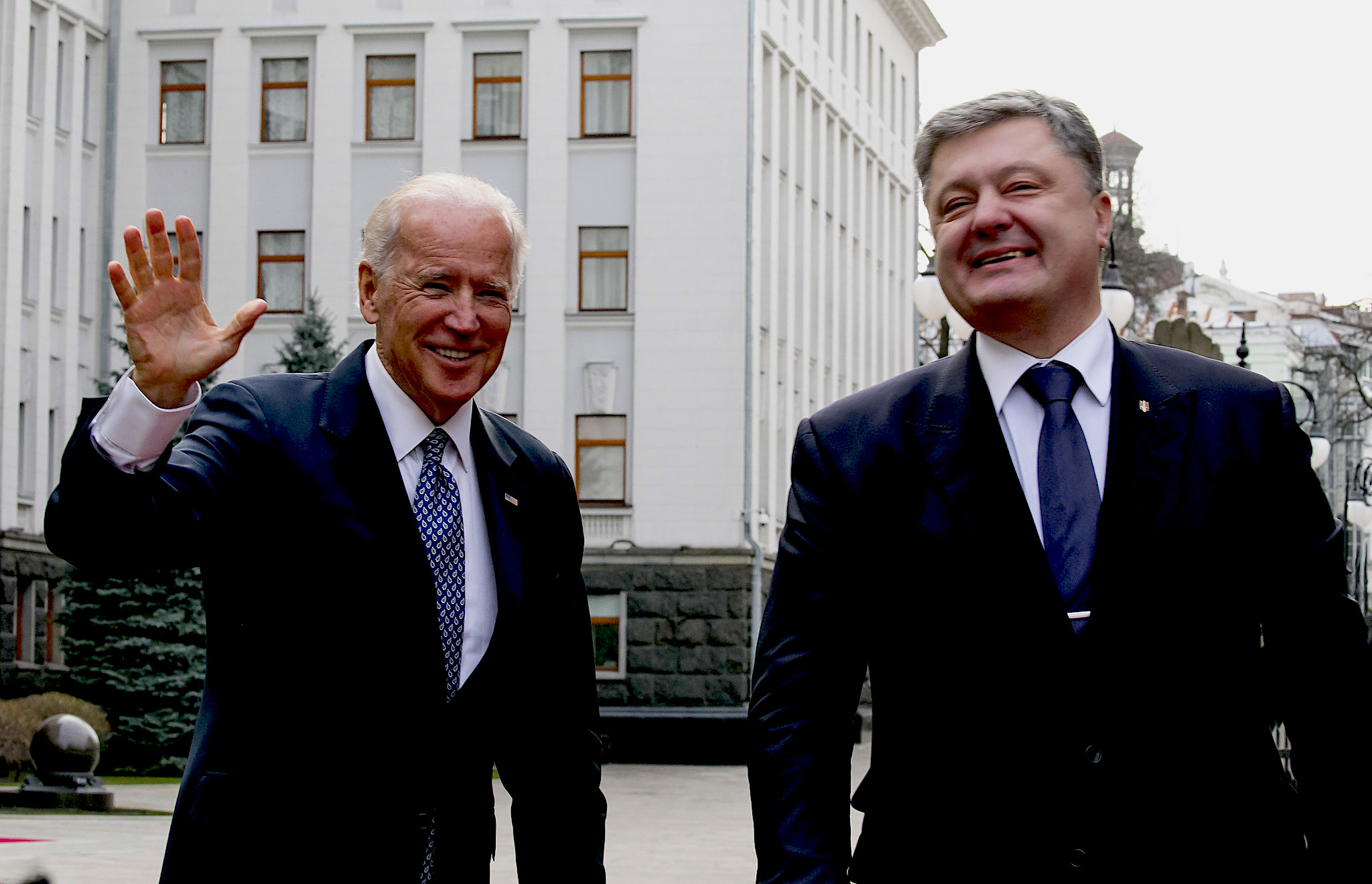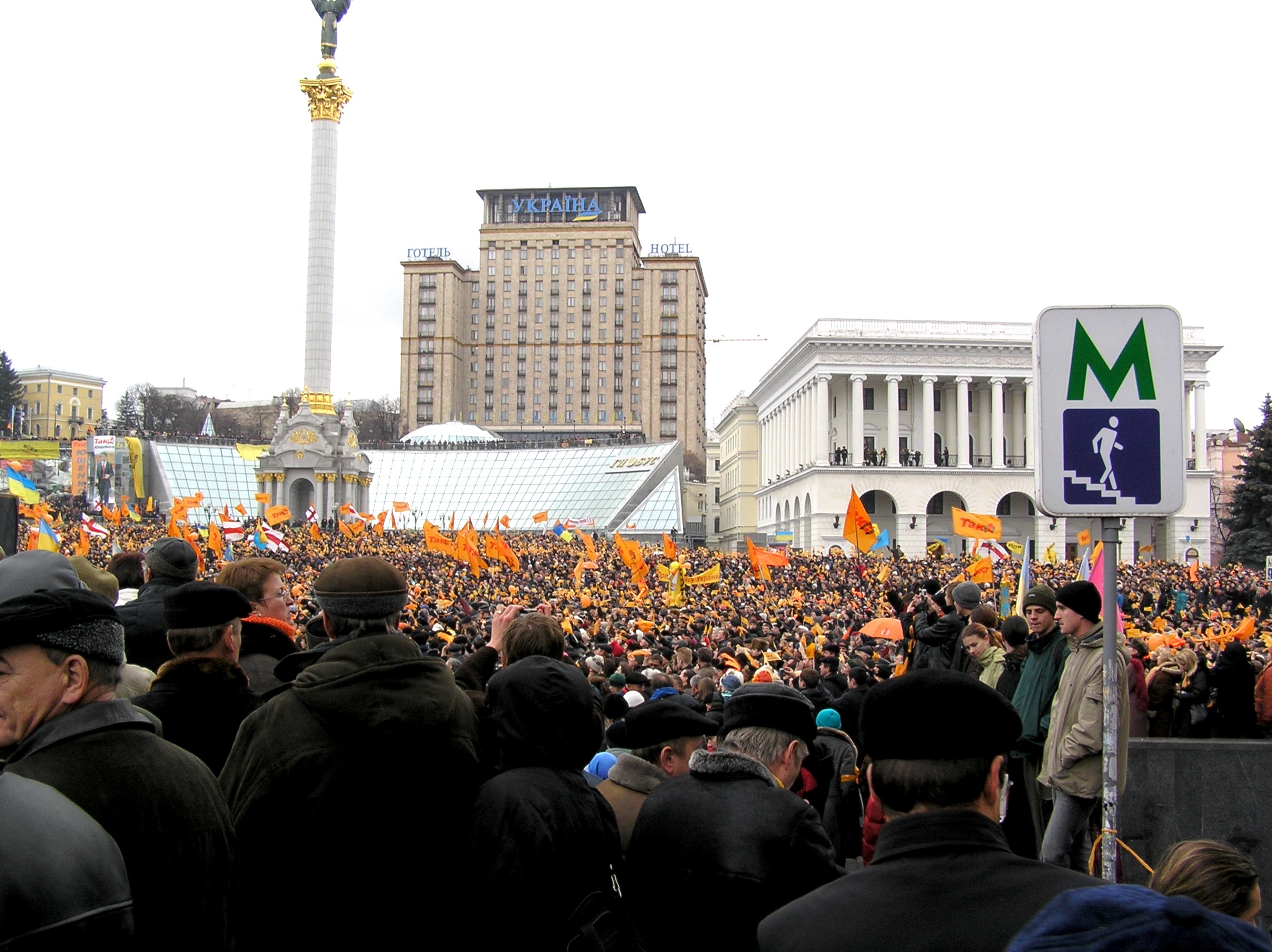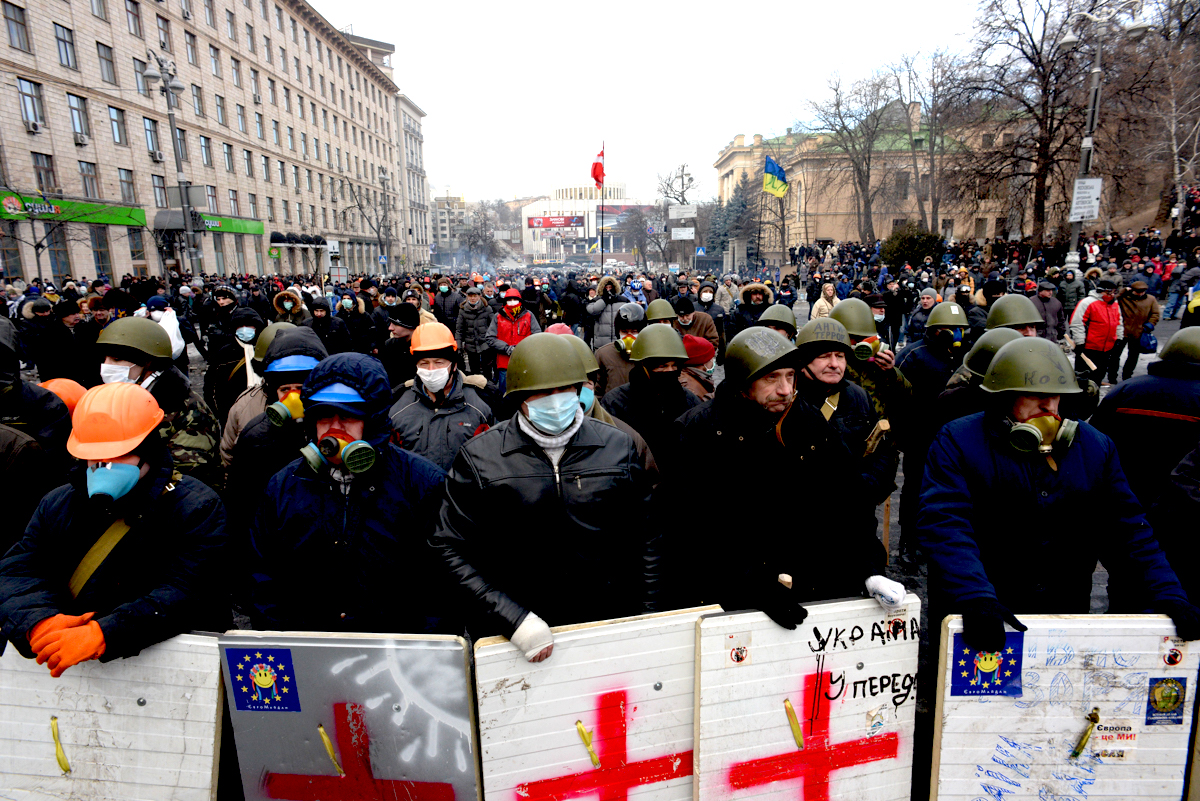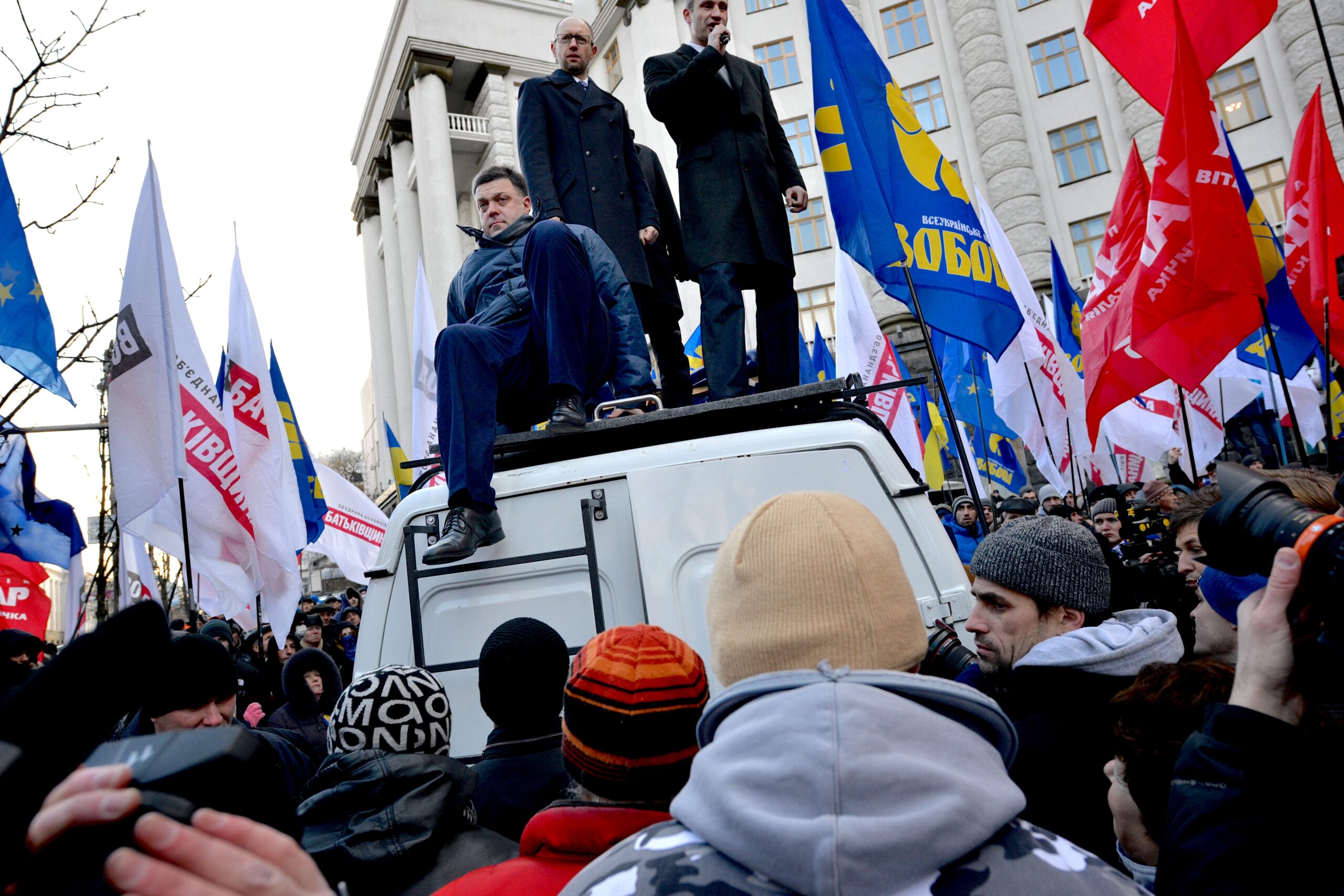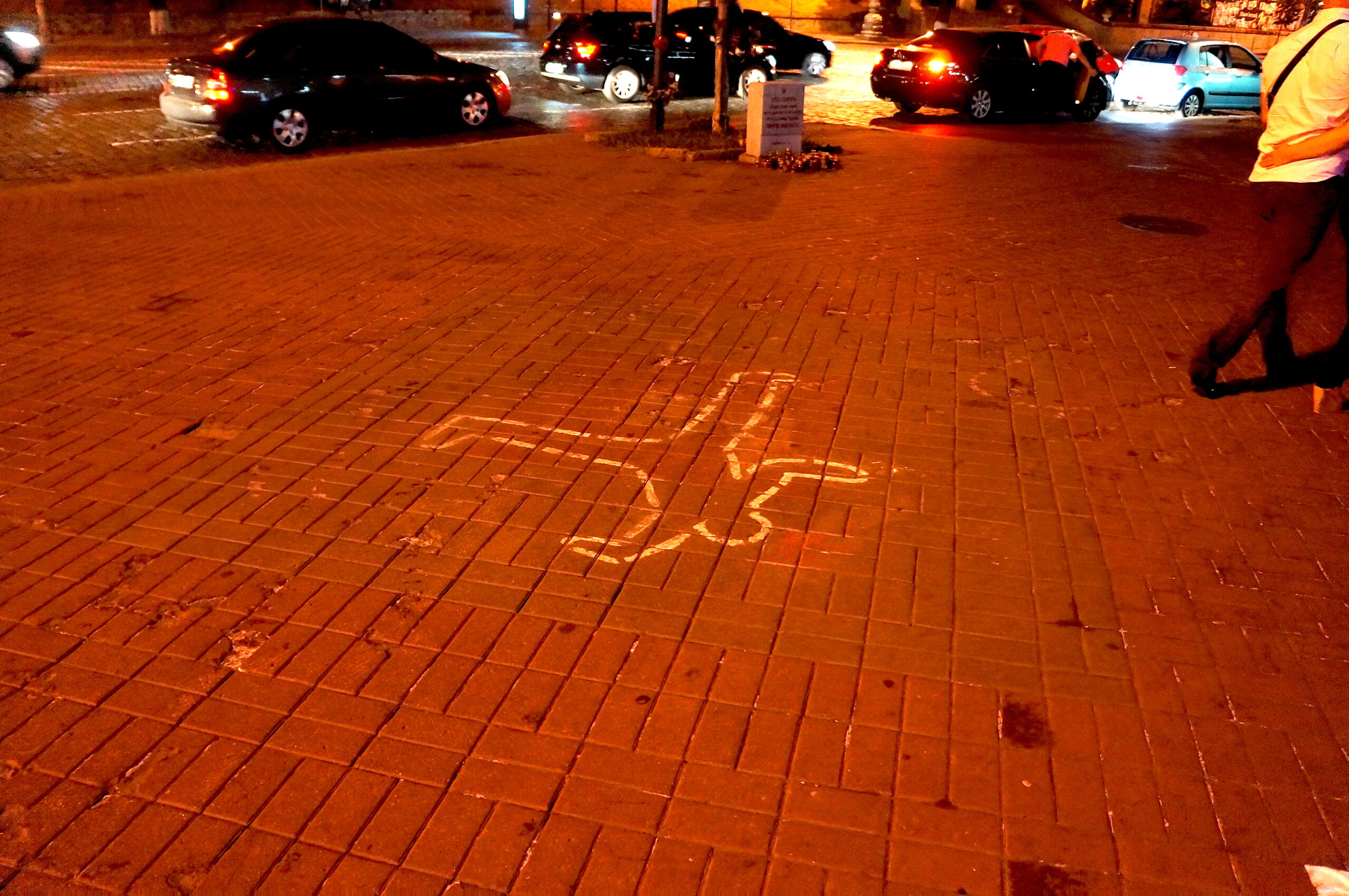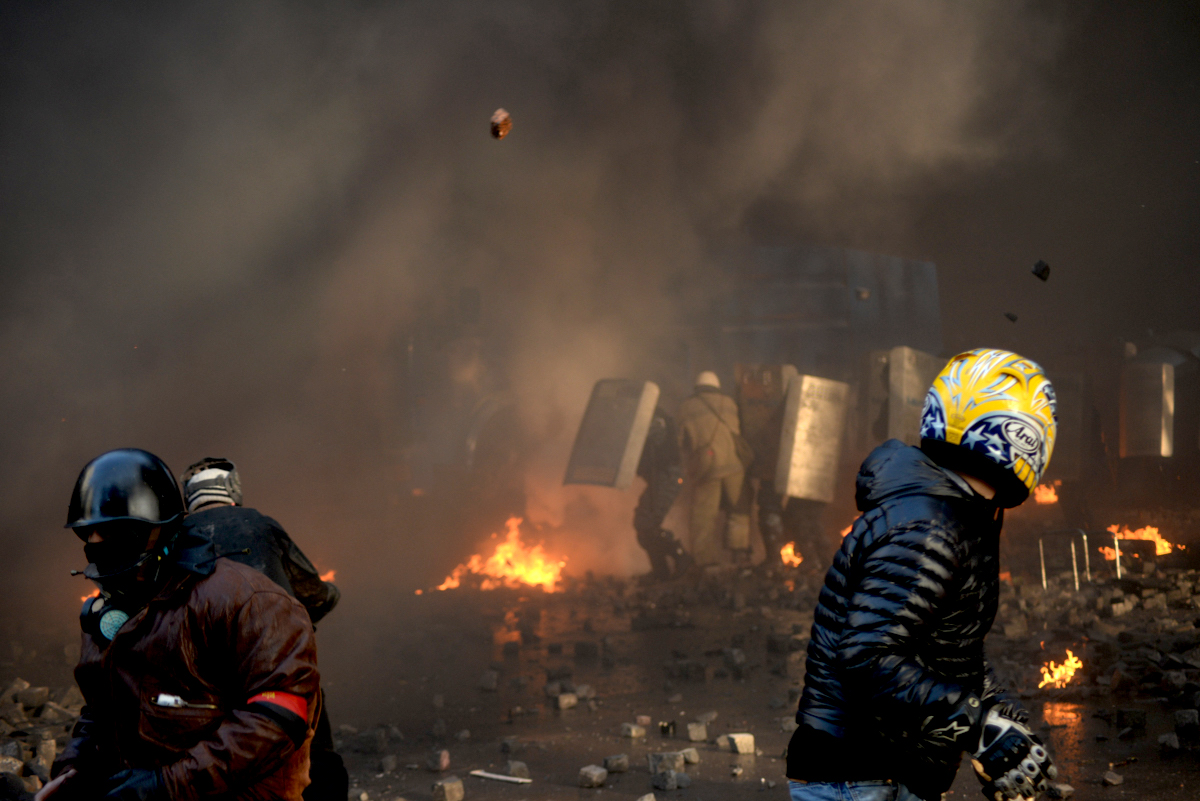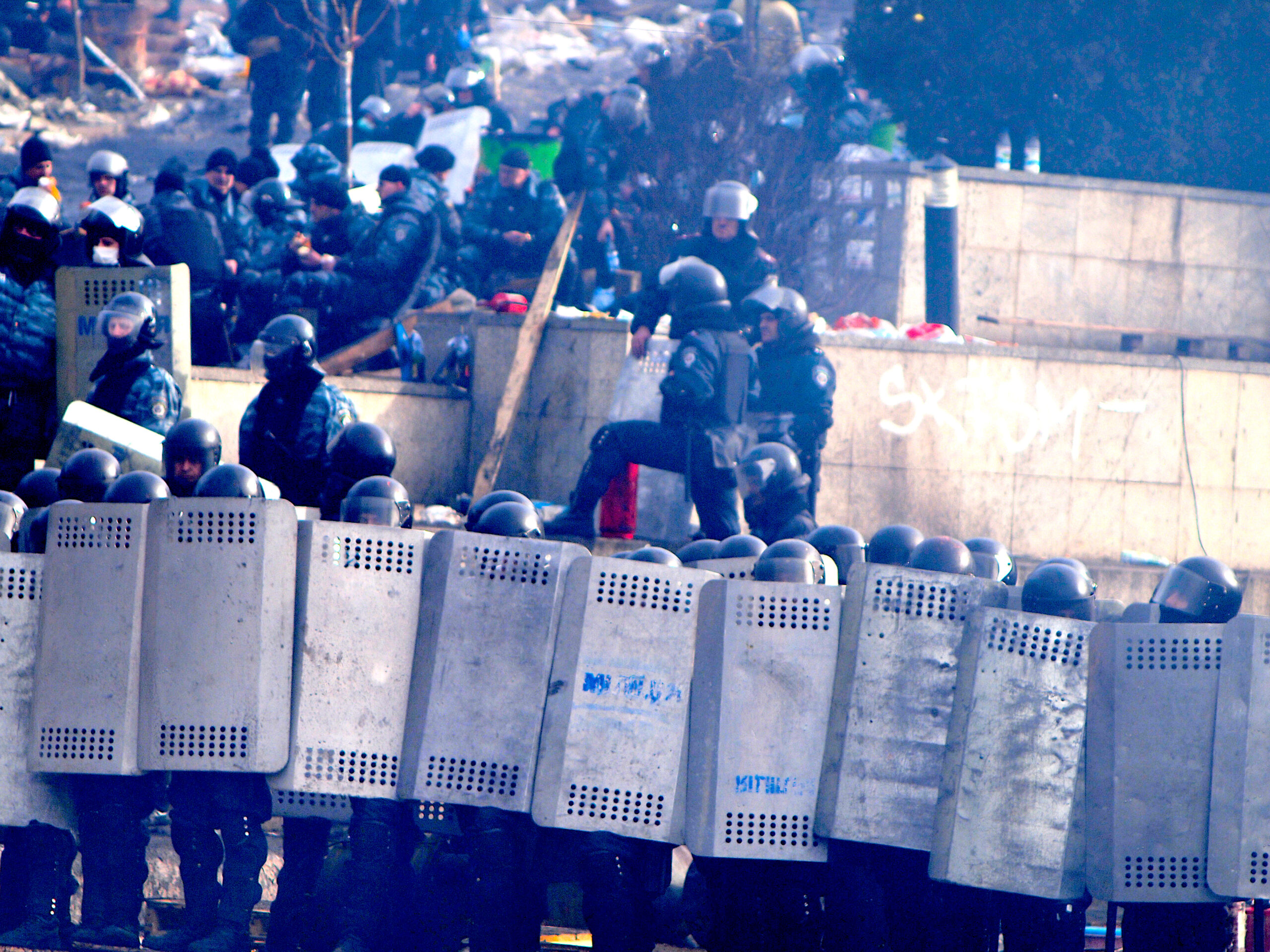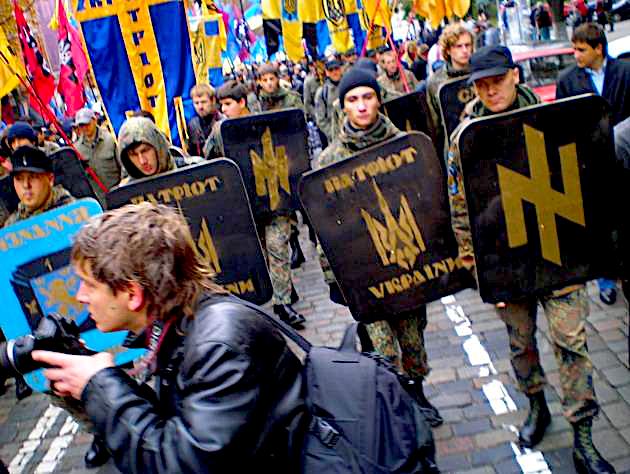
By Chas Freeman, Website, 9/26/23
The Many Lessons of the Ukraine War
Remarks to the East Bay Citizens for Peace
Ambassador Chas W. Freeman, Jr. (USFS, Ret.)
Visiting Scholar, Watson Institute for International and Public Affairs, Brown University
The Barrington Library, Barrington, Rhode Island, 26 September 2023
I want to speak to you tonight about Ukraine – what has happened to it and why, how it is likely to emerge from the ordeal to which great power rivalry has subjected it; and what we can learn from this. I do so with some trepidation and a warning to this audience. My talk, like the conflict in Ukraine, is a long and complicated one. It contradicts propaganda that has been very convincing. My talk will offend anyone committed to the official narrative. The way the American media have dealt with the Ukraine war brings to mind a comment by Mark Twain: “The researches of many commentators have already thrown much darkness on this subject, and it is probable that, if they continue, we shall soon know nothing at all about it.”
It is said that, in war, truth is the first casualty. War is typically accompanied by a fog of official lies. No such fog has ever been as thick as in the Ukraine war. While many hundreds of thousands of people have fought and died in Ukraine, the propaganda machines in Brussels, Kyiv, London, Moscow, and Washington have worked overtime to ensure that we take passionate sides, believe what we want to believe, and condemn anyone who questions the narrative we have internalized. No one not on the front lines has any real idea of what has been happening in this war. What we know is only what our governments and other supporters of the war want us to know. And they have developed the bad habit of inhaling their own propaganda, which guarantees delusional policies.
Every government that is a party to the Ukraine War – Kyiv, Moscow, Washington, and other NATO capitals – has been guilty of various degrees of self-deception and blundering misfeasance. The consequences for all have been dire. For Ukraine, they have been catastrophic. A radical rethinking of policy by all concerned is long overdue.
Whence and Whither NATO?
First, some necessary background. NATO (the North Atlantic Treaty Organization) came into being to defend the European countries within the post-World War II American sphere of influence against the Union of Soviet Socialist Republics (USSR) and its satellite nations. NATO’s area of responsibility was the territory of its members in North America and Western Europe, but nowhere beyond that. The alliance helped maintain a balance of power and keep the peace in Europe during the four-plus decades of the Cold War. In 1991, however, the USSR dissolved, and the Cold War ended. That eliminated any credible threat to NATO members’ territory and raised this issue: if NATO was still the answer to something, what was the question?
The U.S. armed forces had no problem responding to that conundrum. They had compelling vested interests in the preservation of NATO.
- NATO had created and sustained a post-World War II European role and presence for the U.S. military,
- This justified a much larger U.S. force structure and many more highly desirable billets for flag officers[1] than would otherwise exist,
- NATO enhanced the international stature of the American armed forces while fostering a unique U.S. competence in multinational alliance and coalition management, and
- It offered tours of duty in Europe that made peacetime military service more attractive to U.S. soldiers, sailors, airmen, and marines.
Then, too, the 20th century had appeared to underscore that U.S. security was inseparable from that of other north Atlantic countries. The existence of European empires ensured that wars among the great powers of Europe – the Napoleonic wars, World War I and World War II – soon morphed into world wars. NATO was how the United States dominated and managed the Euro-Atlantic region in the Cold War. Disbanding NATO or a U.S. withdrawal from it would, arguably, just free Europeans to renew their quarreling and start yet another war that might not be confined to Europe.
So, NATO had to be kept in business. The obvious way to accomplish that was to find a new, non-European role for the organization. NATO, it came to be said, had to go “out of area or out of business.” In other words, the alliance had to be repurposed to project military power beyond the territories of its Western European and North American member states.
In 1998, NATO went to war with Serbia, bombing it in 1999 to detach Kosovo from it. In 2001, in response to the ‘9/11’ terrorist attacks on New York and Washington, it joined the U.S. in occupying and attempting to pacify Afghanistan.[2] In 2011, NATO fielded forces to engineer regime change in Libya.
The Coup in Kyiv, Crimea, and the Rebellion of Russian Speaking Ukrainians
In 2014, after a well-prepared[3] US-sponsored anti-Russian coup in Kyiv, Ukrainian ultranationalists banned the official use of Russian and other minority languages in their country and, at the same time, affirmed Ukraine’s intention to become part of NATO. Among other consequences, Ukrainian membership in NATO would place Russia’s 250-year-old naval base in the Crimean city of Sebastopol under NATO and hence U.S. control. Crimea was Russian-speaking and had several times voted not to be part of Ukraine. So, citing the precedent of NATO’S violent intervention to separate Kosovo from Serbia, Russia organized a referendum in Crimea that endorsed its reincorporation in the Russian Federation. The results were consistent with previous votes on the issue.
Meanwhile, in response to Ukraine’s banning of the use of Russian in government offices and education, predominantly Russian-speaking areas in the country’s Donbas region attempted to secede. Kyiv sent forces to suppress the rebellion. Moscow responded by backing Ukrainian Russian speakers’ demands for the minority rights guaranteed to them by both the pre-coup Ukrainian constitution and the principles of the Organization for Security and Cooperation in Europe (OSCE). NATO backed Kyiv against Moscow. An escalating civil war among Ukrainians ensued. This soon evolved into an intensifying proxy war in Ukraine between the United States, NATO, and Russia.
Negotiations at Minsk, mediated by the OSCE with French and German support, brokered agreement between Kyiv and Moscow on a package of measures, including:
- a ceasefire,
- the withdrawal of heavy weapons from the front line,
- the release of prisoners of war,
- constitutional reform in Ukraine granting self-government to certain areas of Donbas, and
- the restoration of Kyiv’s control of the rebel areas’ borders with Russia.
The United Nations Security Council endorsed these terms. They represented Moscow’s acceptance that Russian-speaking provinces in Ukraine would remain part of a united but federalized Ukraine, provided they enjoyed Québec-style linguistic autonomy. But, with U.S. support, Ukraine refused to carry out what it had agreed to. Years later, the French and Germans admitted that their mediation efforts at Minsk had been a ruse directed at gaining time to arm Kyiv against Moscow and Ukrainian President Volodymyr Zelensky (like his predecessor in office, Petro Poroshenko) confessed that he had never planned to implement the accords.
Moscow and NATO Enlargement
In 1990, in the context of German reunification, the dissolution of the Warsaw Pact, and Russia’s abandonment of its politico-economic sphere of influence in Central and Eastern Europe, the West had several times somewhat slyly but solemnly promised not to fill the resulting strategic vacuum by expanding NATO into it. But as the 1990s proceeded, despite a lack of enthusiasm on the part of some other NATO members, the United States insisted on doing just that. NATO enlargement steadily erased the Eastern European cordon sanitaire of independent neutral states that successive governments in Moscow had considered essential to Russian security. As former members of the Warsaw Pact entered NATO, U.S. weaponry, troops, and bases appeared on their territory. In 2008, in a final move to extend the U.S. sphere of influence to Russia’s borders, Washington persuaded NATO to declare its intention to admit both Ukraine and Georgia as members.
The eastward deployment of U.S. forces placed ballistic missile defense launchers in both Romania and Poland. These were technically capable of rapid reconfiguration to mount short-range strikes on Moscow. Their deployment fueled Russian fears of a decapitating U.S. surprise attack. If Ukraine entered NATO and the U.S. made comparable deployments there, Russia would have only about five minutes’ warning of a strike on Moscow. NATO’s role in detaching Kosovo from Serbia and in U.S. regime-change and pacification operations in Afghanistan and Libya as well as its support of anti-Russian forces in Ukraine, had convinced Moscow that it could no longer dismiss NATO as a purely defensive alliance.
As early as 1994, successive Russian governments began to warn the U.S. and NATO that continued NATO expansion – especially to Ukraine and Georgia – would compel a forceful response. Washington was aware of Russian determination to do this from multiple sources, including reports from its ambassadors in Moscow. In February 2007. Russian President Vladimir Putin, speaking at the Munich Security Conference, declared: “I think it is obvious that NATO expansion … represents a serious provocation … And we have the right to ask: against whom is this expansion intended? And what happened to the assurances our western partners made after the dissolution of the Warsaw Pact?” On February 1, 2008, Ambassador Bill Burns, now the director of the Central Intelligence Agency (CIA), warned in a telegram from Moscow that, on this subject Russians were united and serious. Burns felt so strongly about the consequences of NATO expansion into Ukraine that he gave his cable the subject line, “Nyet Means Nyet” [“No means no.”]
In April 2008, NATO nonetheless invited both Ukraine and Georgia to join it. Moscow protested that their “membership in the alliance is a huge strategic mistake which would have most serious consequences for pan-European security.” By August 2008, as if to underscore this point, when an emboldened Georgia sought to extend its rule to rebellious minority regions on the Russian border, Moscow went to war to consolidate their independence.
Civil and Proxy War in Ukraine
Less than a day after of the US-engineered coup that installed an anti-Russian regime in Kyiv in 2014, Washington formally recognized the new regime. When Russia then annexed Crimea and civil war broke out with Ukraine’s Russian speakers, the United States sided with and armed the Ukrainian ultranationalists whose policies had alienated Crimea and provoked the Russian-speaking secessionists. The United States and NATO began a multi-billion-dollar effort to reorganize, retrain, and re-equip Kyiv’s armed forces. The avowed purpose was to enable Kyiv to reconquer the Donbas and eventually Crimea. Ukraine’s regular army was then decrepit. Kyiv’s initial attacks on Russian speakers in the Ukrainian eastern and southern regions were largely conducted by ultranationalist militias.[4] By 2015, Russian soldiers were fighting alongside the Donbas rebels. An undeclared US/NATO proxy war with Russia had begun.
Over the course of the next eight years – during which the Ukrainian civil war continued – Kyiv built a NATO-trained army of 700,000 – not counting one million reserves – and hardened it in battle with Russian-supported separatists. Ukrainian regulars numbered only slightly less than Russia’s then 830,000 active-duty military personnel. In eight years, Ukraine had acquired a larger force than any NATO member other than the United States or Türkiye, outnumbering the armed forces of Britain, France, and Germany combined. Not surprisingly, Russia saw this as a threat.
Meanwhile, as tensions with Russia escalated, in early 2019 the United States unilaterally withdrew from the Intermediate Nuclear Force (INF) Treaty, which had barred ground-launched missiles with ranges of up to 3,420 miles from deployment in Europe. Russia condemned this as a “destructive” act that would stoke security risks. Despite ongoing misgivings on the part of some other NATO members, at American insistence, NATO continued periodically to reiterate its offer to incorporate Ukraine as a member, doing so once more on September 1, 2021. By that time, after billions of dollars of U.S. training and arms transfers, Kyiv judged it was finally ready to crush its Russian speakers’ rebellion and their Russian allies. As 2021 ended, Ukraine stepped up pressure on the Donbas separatists and deployed forces to mount a major offensive against them timed for early 2022.
Moscow Demands Negotiations
At about the same time, in mid-December 2021, twenty-eight years after Moscow’s first warning to Washington, Vladimir Putin issued a formal demand for written security guarantees to reduce the apparent threats to Russia from NATO enlargement by restoring Ukrainian neutrality, banning the stationing of U.S. forces on Russia’s borders, and reinstating limits on the deployment of intermediate-range and shorter-range missiles in Europe. The Russian foreign ministry then presented a draft treaty to Washington incorporating these terms – which echoed similar demands put forward by former Russian President Boris Yeltsin in 1997. At the same time, apparently both to underscore Moscow’s seriousness and to counter Kyiv’s planned offensive against the Donbas secessionists, Russia massed troops along its borders with Ukraine.
On January 26, 2022, the U.S. formally responded that neither it nor NATO would agree to negotiate Ukrainian neutrality or other such issues with Russia. A few days later, Russian Foreign Minister Sergei Lavrov laid out his understanding of the American and NATO positions at a meeting of Russia’s Security Council as follows:
“[Our] Western colleagues are not prepared to take up our major proposals, primarily those on NATO’s eastward non-expansion. This demand was rejected with reference to the bloc’s so-called open-door policy and the freedom of each state to choose its own way of ensuring security. Neither the United States, nor [NATO] … proposed an alternative to this key provision.”
Moscow wanted negotiations but, in their absence, was prepared to go to war to remove the threats to which it objected. Washington knew this when it rejected talks with Moscow. The American refusal to talk was an unambiguous decision to accept the risk of war rather than explore any compromise or accommodation with Russia. U.S. and allied intelligence services immediately began releasing information purporting to describe impending Russian military operations[5] in what they described as an attempt to deter them.
Russia Invades Ukraine
In mid-February, fighting between Ukrainian army and secessionist forces in Donbas intensified, with OSCE observers reporting a rapid rise in ceasefire violations by both sides but with most allegedly initiated by Kyiv. Perhaps disingenuously, the Donbas secessionists appealed to Moscow to protect them and ordered a general evacuation of civilians to safe havens in Russia. On February 21, Russian President Putin recognized the independence of the two Donbas “people’s republics” and ordered Russian forces to secure them against Ukrainian attacks.
On February 24, 2022, in an address to the Russian nation, Putin declared that “Russia cannot feel safe, develop, and exist with a constant threat emanating from the territory of modern Ukraine” and announced that he had ordered what he called a “special military operation” “to protect people who have been subjected to bullying and genocide . . . for the last eight years” and to “strive for the demilitarization and denazification of Ukraine.” He added that:
“It is a fact that over the past 30 years we have been patiently trying to come to an agreement with the leading NATO countries regarding the principles of equal and indivisible security in Europe. In response to our proposals, we invariably faced either cynical deception and lies or attempts at pressure and blackmail, while the North Atlantic alliance continued to expand despite our protests and concerns. Its military machine is moving and, as I said, is approaching our very border.”
The official narrative put forward in U.S. and NATO information warfare against Russia contradicts every element of this statement by President Putin, but the record affirms it.
The Run-up to the U.S.-Russian Proxy War in Ukraine
In the post-Soviet era:
- NATO – the U.S. sphere of influence and military presence in Europe – constantly expanded toward Russia’s borders despite escalating Russian warnings and protests.
- By contrast, Moscow was in constant retreat. It had abandoned its sphere of influence in Eastern Europe. It made no effort to reestablish it.
- Moscow repeatedly warned that NATO enlargement and U.S. forward deployment of forces that might threaten it, especially from Ukraine, were a grave threat to it to which it would feel compelled to react.
- Given NATO’s transformation from a purely defensive, Europe-focused alliance into an instrument for power projection in support of U.S. regime-change and other military operations beyond its members’ borders, Moscow had a reasonable basis for concern that Ukrainian membership in NATO would pose an active threat to its security. This threat was underscored by U.S. withdrawal from the treaty that had prevented it from stationing intermediate-range nuclear weapons in Europe, including in Ukraine.
- Moscow consistently demanded neutrality for Ukraine. Neutrality would make Ukraine both a buffer and bridge between itself and the rest of Europe, rather than part of Russia or a platform for Russian power projection against the rest of Europe.
- By contrast, the United States sought to make Ukraine a member of NATO – part of its sphere of influence – and a platform for the deployment of U.S. military power against Russia.
- Moscow agreed at Minsk to respect continued Ukrainian sovereignty in the Donbas region, provided the rights of Russian speakers there were guaranteed. But, with support from the U.S. and NATO, Ukraine declined to implement the Minsk agreement and redoubled its effort to subjugate the Donbas.
- When Washington refused to hear the Russian case for mutual accommodation in Europe and instead insisted on Ukrainian membership in NATO, the U.S. government knew that this would produce a Russian military response. In fact, Washington publicly predicted this.
- Early in the resulting war, when third-party mediation achieved a draft peace agreement between Russia and Ukraine, the West – represented by the British – insisted that Ukraine repudiate it.
This sad incident brings me to the war aims of the participants in the war.
War Aims in Ukraine
Kyiv has not wavered from its objectives of:
- Forging a purely Ukrainian national identity from which Russian and other languages, cultures, and religious authorities are excluded.
- Subjugating the Russian speakers who rebelled in response to this attempt at their forced assimilation.
- Obtaining U.S. and NATO protection and integrating with the EU.
- Reconquering the Russian-speaking territories Moscow has illegally annexed from Ukraine, including both the Donbas oblasts and Crimea.
Moscow clearly stated its maximum and minimum objectives in the draft treaty that it presented to Washington on December 17, 2021. Core Russian interests have been and remain:
- (1) to deny Ukraine to the American sphere of influence that has engulfed the rest of Eastern Europe by compelling Ukraine to affirm neutrality between the United States / NATO and Russia, and
- (2) to protect and ensure the basic rights of Russian speakers in Ukraine.
Washington’s objectives – which NATO has dutifully adopted as its own – have been much more open-ended and unspecific. As National Security Adviser Jake Sullivan put it in June 2022,
“We have . . . refrained from laying out what we see as an endgame. . .. We have been focused on what we can do today, tomorrow, next week to strengthen the Ukrainians’ hand to the maximum extent possible, first on the battlefield and then ultimately at the negotiating table.”
Inasmuch as the first principle of warfare is to establish realistic objectives, a strategy to achieve them, and a plan for war termination, this is a perfect description of how to brew up a “forever war.” As Vietnam, Afghanistan, Iraq, Somalia, Libya, Syria, and Yemen attest, this has become the established American way of war. No clear objectives, no plan to achieve them, and no concept of how to end the war, on what terms, and with whom.
The most cogent statement of U.S. objectives in this war was offered by President Biden as it began. He said his goal with Russia was to “sap its economic strength and weaken its military for years to come” – whatever it takes. At no point has the United States government or NATO declared that the protection of Ukraine or Ukrainians, as opposed to exploiting their bravery to take down Russia, is the central American objective. In April 2022, Secretary of Defense Lloyd Austin reiterated that U.S. aid to Ukraine was intended to weaken and isolate Russia and thereby deprive it of any credible capacity to make war in future. Quite a few American politicians and pundits have extolled the benefits to having Ukrainians rather than Americans sacrifice their lives for this purpose. Some have gone farther and advocated the breakup of the Russian Federation as a war aim. If you are Russian, you don’t have to be paranoid to see such threats as existential. Russian President Putin assesses U.S. war aims as directed at humbling the Russian Federation strategically and, if possible, overthrowing its government, and dismembering it.[6] The United States has not disputed this assessment.
Peace Set Aside
In mid-March 2022, the government of Turkey and Israeli Prime Minister Naftali Bennett mediated between Russian and Ukrainian negotiators, who tentatively agreed on the outlines of a negotiated interim settlement. The agreement provided that Russia would withdraw to its position on February 23, when it controlled part of the Donbas region and all of Crimea, and in exchange, Ukraine would promise not to seek NATO membership and instead receive security guarantees from a number of countries. A meeting between Russian President Putin and Ukrainian President Zelensky was in the process of being arranged to finalize this agreement, which the negotiators had initialed ad referendum – meaning subject to the approval of their superiors.
On March 28, 2022. President Zelensky publicly affirmed that Ukraine was ready for neutrality combined with security guarantees as part of a peace agreement with Russia. But on April 9 British Prime Minister Boris Johnson made a surprise visit to Kyiv. During this visit, he reportedly urged Zelensky not to meet Putin because (1) Putin was a war criminal and weaker than he seemed. He should and could be crushed rather than accommodated; and (2) even if Ukraine was ready to end the war, NATO was not.
Zelensky’s proposed meeting with Putin was then called off. Putin declared that talks with Ukraine had come to a dead end. Zelensky explained that “Moscow would like to have one treaty that would resolve all the issues. However, not everyone sees themselves at the table with Russia. For them, security guarantees for Ukraine is one issue, and the agreement with the Russian Federation is another issue.” This marked the end of bilateral Russian-Ukrainian negotiations and thus of any prospect of a resolution of the conflict anywhere but on the battlefield.
What Happened and Who’s Winning What
This war was born in and has been continued due to miscalculations by all sides. NATO expansion was legal but predictably provocative. Russia’s response was entirely predictable, if illegal, and has proven very costly to it. Ukraine’s de facto military integration into NATO has resulted in its devastation.
The United States calculated that Russian threats to go to war over Ukrainian neutrality were bluffs that might be deterred by outlining and denigrating Russian plans and intentions as Washington understood them. Russia assumed that the United States would prefer negotiations to war and would wish to avoid the redivision of Europe into hostile blocs. Ukrainians counted on the West protecting their country. When Russian performance in the first months of the war proved lackluster, the West concluded that Ukraine could defeat it. None of these calculations have proved correct.
Nevertheless, official propaganda, amplified by subservient mainstream and social media, has convinced most in the West that rejecting negotiations on NATO expansion and encouraging Ukraine to fight Russia is somehow “pro-Ukrainian.” Sympathy for the Ukrainian war effort is entirely understandable, but, as the Vietnam War should have taught us, democracies lose when cheerleading replaces objectivity in reporting and governments prefer their own propaganda to the truth of what is happening on the battleground.
The only way you can judge the success or failure of policies is by reference to the objectives they were designed to achieve. So, how are the participants in the Ukraine War doing in terms of achieving their objectives?
Let’s start with Ukraine.
From 2014 to 2022, the civil war in Donbas took nearly 15,000 lives. How many have been killed in action since the US/NATO-Russian proxy war began in February 2022 is unknown but is certainly in the several hundreds of thousands. Casualty numbers have been concealed by unprecedentedly intense information warfare. The only information in the West about the dead and wounded has been propaganda from Kyiv claiming vast numbers of Russian dead while revealing nothing at all about Ukrainian casualties. It is known, however, that ten percent of Ukrainians are now involved with the armed forces and 78 percent have relatives or friends who have been killed or wounded. An estimated 50,000 Ukrainians are now amputees. (By comparison, only 41,000 Britons had to have amputations in World War I, when the procedure was often the only one available to prevent death. Fewer than 2,000 U.S. veterans of the Afghanistan and Iraq invasions had amputations.) Most observers believe that Ukrainian forces have taken much heavier losses than their Russian enemies and that hundreds of thousands of them have given their lives in their country’s defense and efforts to retake territory occupied by the Russians.
When the war began, Ukraine had a population of about thirty-one million. The country has since lost at least one-third of its people. Over six million have taken refuge in the West. Two million more have left for Russia. Another eight million Ukrainians have been driven from their homes but remain in Ukraine.
Ukraine’s infrastructure, industries, and cities have been devastated and its economy destroyed. As is usual in wars, corruption – long a prominent feature of Ukrainian politics – has been rampant. Ukraine’s nascent democracy is no more, with all opposition parties, uncontrolled media outlets, and dissent outlawed.
On the other hand, Russian aggression has united Ukrainians, including many who are Russian speaking, to an extent never seen before. Moscow has thereby inadvertently reinforced the separate Ukrainian identity that both Russian mythology and President Putin have sought to deny. What Ukraine has lost in territory it has gained in patriotic cohesion based on passionate opposition to Moscow.
The flip side of this is that Ukraine’s Russian-speaking separatists have also had their Russian identity reinforced. Ukrainian refugees in Russia are the hardest of hardliners demanding retribution from Kyiv. There is now little to no possibility of Russian speakers accepting a status in a united Ukraine, as would have been the case under the Minsk Accords. And, with the failure of Ukraine’s “counteroffensive,” it is very unlikely that Donbas or Crimea will ever return to Ukrainian sovereignty. As the war continues, Ukraine may well lose still more territory, including its access to the Black Sea. What has been lost on the battlefield and in the hearts of the people cannot be regained at the negotiating table. Ukraine will emerge from this war maimed, crippled, and much reduced in both territory and population.
Finally, there is now no realistic prospect of Ukrainian membership in NATO. As NSC Advisor Sullivan has said, “everyone needs to look squarely at the fact” that allowing Ukraine to join NATO at this point “means war with Russia.” NATO Secretary General Jens Stoltenberg has stated that the prerequisite for Ukrainian membership in NATO is a peace treaty between it and Russia. No such treaty is anywhere in sight. In continuing to insist that Ukraine will become a NATO member once the war is concluded, the West has perversely incentivized Russia not to agree to end the war. But, in the end, Ukraine will have to make its peace with Russia, almost certainly largely on Russian terms.
Whatever else the war may be achieving, it has not been good for Ukraine. Ukraine’s bargaining position vis-à-vis Russia has been greatly weakened. But then, Kyiv’s fate has always been an afterthought in U.S. policy circles. Washington has instead sought to exploit Ukrainian courage to thrash Russia, reinvigorate NATO, and reinforce U.S. primacy in Europe. And it has not spent any time at all thinking about how to restore peace to Europe.
How about Russia?
Has it succeeded in expelling American influence from Ukraine, forced Kyiv to declare neutrality, or reinstating the rights of Russian speakers in Ukraine? Clearly not.
For now, at least, Ukraine has become a complete dependency of the United States and its NATO allies. Kyiv is an embittered, long-term antagonist of Moscow. Kyiv clings to its ambition to join NATO. Russians in Ukraine are the targets of the local version of cancel culture. Whatever the outcome of the war, mutual animosity has erased the Russian myth of Russian-Ukrainian brotherhood based on a common origin in Kievan Rus. Russia has had to abandon three centuries of efforts to identify with Europe and instead pivot to China, India, the Islamic world, and Africa. Reconciliation with a seriously alienated European Union will not come easily, if at all. Russia may not have lost on the battlefield or been weakened or strategically isolated, but it has incurred huge opportunity costs.
Then, too, NATO has expanded to include Finland and Sweden. This does not change the military balance in Europe. Western portrayal of Russia as inherently predatory notwithstanding, Moscow has had neither the desire nor the capability to attack either of these two formerly very Western-aligned and formidably armed but nominally “neutral” states. Nor does either Finland or Sweden have any intention of joining an unprovoked attack on Russia. But their decision to join NATO is politically wounding for Moscow.
Since the West shows no willingness to accommodate Russian security concerns, if Moscow is to achieve its goals, it now has no apparent alternative to battling on. As it does so, it is stimulating European determination to meet previously ignored NATO targets for defense spending and to acquire self-reliant military capabilities directed at countering Russia independently of those of the United States. Poland is reemerging as a powerful hostile force on Russia’s borders. These trends are changing the European military balance to Moscow’s long-term disadvantage.
What about the United States?
In 2022 alone the United States approved $113 billion in aid to Ukraine. The Russian defense budget then was then less than half of that — $54 billion. It has since roughly doubled. Russian defense industries have been revitalized. Some now produce more weaponry in a month than they previously did in a year. Russia’s autarkic economy has weathered 18 months of all-out war against it from both the U.S. and the EU. It just overtook Germany to become the fifth wealthiest economy in the world and the largest in Europe in terms of purchasing power parity. Despite repeated Western claims that Russia was running out of ammunition and losing the war of attrition in Ukraine, it has not, while the West has. Ukrainian bravery, which has been hugely impressive, has been no match for Russian firepower.
Meanwhile, the alleged Russian threat to the West, once a powerful argument for NATO unity, has lost credibility. Russia’s armed forces have proven unable to conquer Ukraine, still less the rest of Europe. But the war has taught Russia how to counter and overcome much of the most advanced weaponry of the United States and other Western countries.
Before the United States and NATO rejected negotiations, Russia was prepared to accept a neutral and federalized Ukraine. In the opening phase of its invasion of Ukraine, Russia reaffirmed this willingness in a draft peace treaty with Ukraine which the United States and NATO blocked Kyiv from signing. Western diplomatic intransigence has failed to persuade Moscow to accommodate Ukrainian nationalism or accept Ukraine’s inclusion in NATO and the American sphere of influence in Europe. The proxy war seems instead to have convinced Moscow that it must gut Ukraine, keep the Ukrainian territories it has illegally annexed, and likely add more, thus ensuring that Ukraine is a dysfunctional state unable either to join NATO or to fulfill the ultranationalist, anti-Russian vision of its World War II neo-Nazi hero, Stepan Bandera.
The war has led to the superficial unity of NATO but there are obvious fissures among members. The sanctions imposed on Russia have done heavy damage to European economies. Without Russian energy supplies, some European industries are no longer internationally competitive. As NATO’s recent summit at Vilnius showed, member countries differ on the desirability of admitting Ukraine. NATO unity seems unlikely to outlast the war. These realities help explain why most of America’s European partners want to end the war as soon as possible.
The Ukraine War has clearly put paid to the post-Soviet era in Europe, but it has not made Europe in any respect more secure. It has not enhanced America’s international reputation or consolidated U.S. primacy. The war has instead accelerated the emergence of a post-American multi-polar world order. One feature of this is an anti-American axis between Russia and China.
To weaken Russia, the United States has resorted to unprecedentedly intrusive unilateral sanctions, including secondary sanctions targeting normal arms-length commercial activity that does not involve a U.S. nexus and is legal in the jurisdictions of the transacting parties. Washington has been actively blocking trade between countries that have nothing to do with Ukraine or the war there because they won’t jump on the U.S. bandwagon. As a result, much of the world is now engaged in pursuit of financial and supply-chain linkages that are independent of U.S. control. This includes intensified international efforts to end dollar hegemony, which is the basis for U.S. global primacy. Should these efforts succeed, the United States will no longer be able to run the trade and balance of payments deficits that sustain its current standard of living and status as the most powerful society on the planet.
Washington’s use of political and economic pressure to compel other countries to conform to its anti-Russian and anti-Chinese policies has clearly backfired. It has encouraged even former U.S. client states to search for ways to avoid entanglement in future American conflicts and proxy wars they do not support, like that in Ukraine. To this end, they are abandoning exclusive reliance on the United States and forging ties to multiple economic and politico-military partners. Far from isolating Russia or China, America’s coercive diplomacy has helped both Moscow and Beijing to enhance relationships in Africa, Asia, and Latin America that reduce U.S. influence in favor of their own.
To summarize:
In short, U.S. policy has resulted in great suffering in Ukraine and escalating defense budgets here and in Europe but has failed to weaken or isolate Russia. More of the same will not accomplish either of these oft-stated American objectives. Russia has been educated in how to combat American weapons systems and has developed effective counters to them. It has been militarily strengthened, not weakened. It has been reoriented and freed from Western influence, not isolated.
If the purpose of war is to establish a better peace, this war is not doing that. Ukraine is being eviscerated on the altar of Russophobia. At this point, no one can confidently predict how much of Ukraine or how many Ukrainians will be left when the fighting stops or when and how to stop it. Kyiv just failed to meet more than a fraction of its recruitment goals. Combating Russia to the last Ukrainian was always an odious strategy. But when NATO is about to run out of Ukrainians, it is not just cynical; it is no longer a viable option.
Lessons to be Learned from the Ukraine War
What can we learn from this debacle? It has provided many unwelcome reminders of the basic principles of statecraft.
- Wars do not decide who is right. They determine who is left.
- The best way to avoid war is to reduce or eliminate the apprehensions and grievances that cause it.
- When you refuse to hear, let alone address an aggrieved party’s case for adjustments in your policies toward it, you risk a violent reaction from it.
- No one should enter a war without realistic objectives, a strategy to achieve them, and a plan for war termination.
- Self-righteousness and bravery are no substitutes for military mass, firepower, and stamina.
- In the end, wars are won and lost on the battlefield, not with propaganda inspired by and directed at reinforcing wishful thinking.
- What has been lost on the battlefield can seldom, if ever, be recovered at the negotiating table.
- When wars cannot be won, it is usually better to seek terms by which to end them than to reinforce strategic failure.
It is time to prioritize saving as much as possible of Ukraine. This war has become existential for it. Ukraine needs diplomatic backing to craft a peace with Russia if its military sacrifices are not to have been in vain. It is being destroyed. It must be rebuilt. The key to preserving Ukraine is to empower and back Kyiv to end the war on the best terms it can obtain, to facilitate the return of its refugees, and to use the EU accession process to advance liberal reforms and institute clean government in a neutral Ukraine.
Unfortunately, as things stand, both Moscow and Washington seem determined to persist in Ukraine’s ongoing destruction. But whatever the outcome of the war, Kyiv and Moscow will eventually have to find a basis for coexistence. Washington needs to support Kyiv in challenging Russia to recognize both the wisdom and the necessity of respect for Ukrainian neutrality and territorial integrity.
Finally, this war should provoke some sober rethinking here, in Moscow, and by NATO of the consequences of diplomacy-free, militarized foreign policy. Had the United States agreed to talk with Moscow, even if it had continued to reject much of what Moscow demanded, Russia would not have invaded Ukraine as it did. Had the West not intervened to prevent Ukraine from ratifying the treaty others helped it agree with Russia at the outset of the war, Ukraine would now be intact and at peace.
This war did not need to take place. Every party to it has lost far more than it has gained. There’s a lot to be learned from what has happened in and to Ukraine. We should study and learn these lessons and take them to heart.
[1] Generals and admirals.
[2] Ukraine contributed troops to this NATO operation despite not being a member of the alliance.
[3] Reportedly, by 2014, various agencies of the U.S. government had committed a cumulative total of $5 billion or more to political subsidies and education in support of regime change in Ukraine.
[4] Prior to the U.S. and NATO decision to aid Ukraine against its Russian-backed separatists, these militias were commonly identified as neo-Nazi in the Western media. They professed to be followers of Stepan Bandera – who has now been adopted as a revered national figure by Kyiv. Bandera was famous for his extreme Ukrainian nationalism, fascism, antisemitism, xenophobia, and violence. He and his followers were allegedly responsible for massacring 50,000 – 100,000 Poles and for collaborating with the Nazis in the murder of an even larger number of Jews. After the US/NATO proxy war broke out, despite their continuing display of Nazi regalia and symbols on their uniforms and their ties to neo-Nazi groups in other countries, Western media ceased to characterize these militias as neo-Nazis.
[5] The “special military operation’ mounted by Russia bore little resemblance to the specific predictions put forward in this information warfare, which appears have been designed as much to rally support for Ukraine and boost its morale as to deter Russia.
[6] See, e.g., https://jamestown.org/event/watch-the-video-preparing-for-the-dissolution-of-the-russian-federation/
